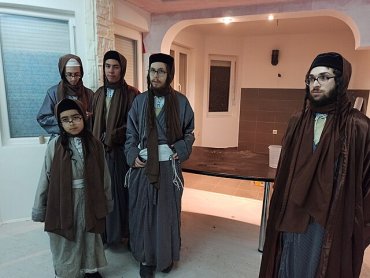Why Are Some Changes To Judaism Acceptable & Others Are Not?
Why does Orthodox Judaism consider some changes – like Maimonides’ approach, kabbalah, or the Chasidic movement as “kosher,” but things like the Karaites’ philosophy and other non-Orthodox movements throughout history as non-acceptable changes?
Thank you,
Wondering in L.A.
Dear Wondering in L.A.
Thanks for your question. It reminds me of something a great man once said: “Now the world don’t move to the beat of just one drum. What might be right for you may not be right for some. … It takes Diff’rent Strokes to move the world.”
This is true in so many areas. Let’s take something mundane, like copying and pasting on a PC. I might like to right click and then highlight “copy” and “paste.” You might like to hit Control+C and Control+V. Someone else may like to point to the toolbar at the top of the screen and click on the scissor and clipboard icons. We each have our own reason for our preferences – it’s more elegant, it’s fewer steps, whatever – but at the end of the day, each way gets the job done.
Now let’s apply this concept to a religious area. Jewish men are not allowed to shave off the hair at their temples (by which I mean the sides of the head, not the synagogue). This is called “payes” or “payot” or “sidelocks.” Chasidic practice is to grow the payes long. Some curl them, some tuck them behind the ear – there are different styles. I, however, am a misnagid (non-chasid). I also have payes but you might not know it. I simply don’t have the barber shave my sideburns. If he did, I wouldn’t have payes.
Another example: there is a law that a Jewish man must separate the upper portion of his body from the lower portion of his body when reciting blessings or prayers. Chasidim do this with a special belt called a gartel that is designated to be worn during prayer. Misnagdim also follow this law, we just don’t require a special belt for it. The belt we’re already wearing – or for that matter the waistband of one’s pants – accomplishes the same thing.
Someone might ask me why I don’t have payes or wear a belt for prayer – but I do. They’re just not as conspicuous as a Chasid’s might be. We’re doing the same thing, albeit in different ways. It’s like he’s right-clicking and I’m hitting Control+V.
Orthodox Judaism is a bigger tent than most people think. There’s more than one way to look at things and more than one way to get things done. I was raised Reform but it never spoke to me. I was exposed to Chabad and, while I enjoyed it, their approach wasn’t my flavor, either. When I was exposed to NCSY, that was more my style. Within NCSY, I gravitated towards the righter-wing (“black hat”) element of a very mixed-bag advisory staff; others favored those with a more “modern” approach. I have never cared for Carlebach-style services (i.e., with copious amounts of song and dance); others love them. It takes Diff’rent Strokes to move the world.
The saying is that there are “shivim panim laTorah” – 70 sides to the Torah. I always say that 70 is a very large number but it’s also finite. You may be into Chasidus, someone else might be into kabbalah, I might favor a more rationalistic approach – s’all good. But just because many things are inside the very big tent, that doesn’t mean that everything is. Some things are decidedly on the outside.
You mention the Karaites. This movement dates back to the 9th century. It was preceded by such movements as the Sadducees and the Boethusians, which date back to the time of the second Temple. What all these movements have in common is that they reject the Oral Law. According to Orthodoxy, acceptance of the Oral Law is an inherent religious belief. A movement that teaches otherwise cannot be accepted as just another approach. It’s outside the tent.
Similarly, various “messianic” movements that teach that Jesus is the messiah. (And I say this knowing that there are at least several Messianic Jews who follow this site.) While there is certainly room for some debate regarding the identity of the messiah – this has been the case from Talmudic times right up through today – the Jesus-as-messiah ship has long since sailed. He doesn’t fit the Biblical criteria for being the messiah and, besides, he died long ago. (There’s no precedent in Judaism for a “second coming.”) Additional ideas, such as that Jesus is God, a part of God, the son of God, or even a prophet, likewise have no basis in Jewish thought. The same is true of attributing a variety of unrelated Bible verses to the circumstances of Jesus’ life. Bottom line, any movement that presents Jesus as the messiah is outside the tent. (This is not limited to Jesus. The same would be true of Shabbetai Tzvi, David Koresh, etc. Whether or not they were ever serious contenders for the job, they have all been eliminated from the running.)
Now, Maimonides and the Baal Shem Tov had innovative ideas that initially rocked the boat. Why did theirs ultimately get accepted? First of all, their approaches to various matters, while novel, still fit within the tent. Second of all, Marcel Duchamp. Marcel Duchamp was a modern artist. One of his works, Prelude to a Broken Arm, consists of a shovel hanging from the ceiling by a wire. He didn’t even make the shovel, he just hung it from the ceiling! It’s in the Museum of Modern Art in New York. Here’s a picture of it.
I first saw this when I was in college and it angered me. “I could do that!” I railed. I was working in a restaurant at the time and one of the waitresses was an art student. “Duchamp can do things like that,” she explained, “because he has already established his credentials.”
The light bulb went off. James Joyce could get away with Finnegan’s Wake because he’s James Joyce. The Beatles could get away with Revolution Nine because they’re the Beatles. This I already knew. Similarly, I realized, Marcel Duchamp could get away with Prelude to a Broken Arm because he’s Marcel Duchamp. I may not get this work of art but my lack of understanding doesn’t delegitimize it. People who know far more about art than I ever will have accepted it.
You and I can express new ideas but they probably won’t get much attention. We’re not likely to spark any movements and our ideas are not likely to become accepted as religious approaches. But we’re not Maimonides. When you’re the author of the Mishneh Torah (the first code of Jewish law, predating the Shulchan Aruch by nearly 400 years), Sefer HaMitzvos, the Commentary on the Mishna and Guide for the Perplexed, your ideas are going to be heard. If these ideas are outside the box, people may become angry or confused. But being outside the box doesn’t mean they’re outside the tent. As long as they’re in the tent – which Maimonides’ ideas were – there’s a very good chance they will ultimately be accepted.
Sincerely yours,
Rabbi Jack Abramowitz, JITC Educational Correspondent
If you found this content meaningful and want to help further our mission through our Keter, Makom, and Tikun branches, please consider becoming a Change Maker today.







